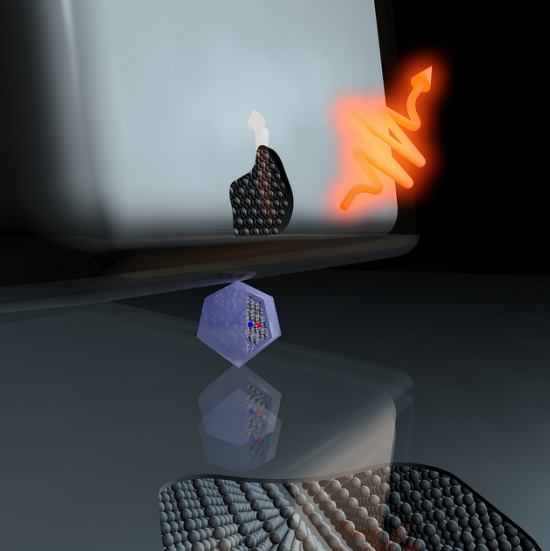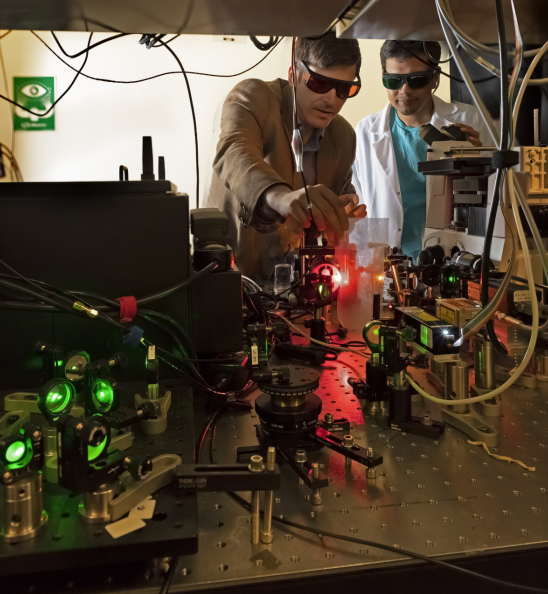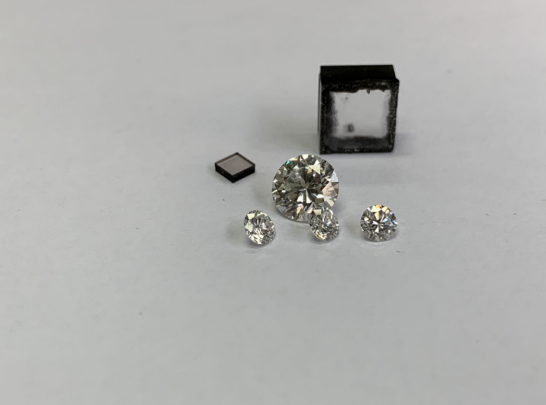Company tel:+86-379-63184520
Contact number:+86-15937921751
Postcode:471000
Email:info@yuxindiamond.com
Address:3-1-508 Luoyang National University Science Park, No. 2 Penglai Road, Jianxi District, Luoyang, China 471000
Toward Unhackable Communication: Single Particles of Light Could Bring the 'Quantum Internet'

Hacker attacks on everything from social media accounts to government files could be largely prevented by the advent of quantum communication, which would use particles of light called "photons" to secure information rather than a crackable code.
The problem is that quantum communication is currently limited by how much information single photons can help send securely, called a "secret bit rate." Purdue University researchers created a new technique that would increase the secret bit rate 100-fold, to over 35 million photons per second.
"Increasing the bit rate allows us to use single photons for sending not just a sentence a second, but rather a relatively large piece of information with extreme security, like a megabyte-sized file," said Simeon Bogdanov, a Purdue postdoctoral researcher in electrical and computer engineering.
Eventually, a high bit rate will enable an ultra-secure "quantum internet," a network of channels called "waveguides" that will transmit single photons between devices, chips, places or parties capable of processing quantum information.
"No matter how computationally advanced a hacker is, it would be basically impossible by the laws of physics to interfere with these quantum communication channels without being detected, since at the quantum level, light and matter are so sensitive to disturbances," Bogdanov said.
Using light to send information is a game of probability: Transmitting one bit of information can take multiple attempts. The more photons a light source can generate per second, the faster the rate of successful information transmission.

"A source might generate a lot of photons per second, but only a few of them may actually be used to transmit information, which strongly limits the speed of quantum communication," Bogdanov said.
For faster quantum communication, Purdue researchers modified the way in which a light pulse from a laser beam excites electrons in a man-made "defect," or local disturbance in a crystal lattice, and then how this defect emits one photon at a time.
The researchers sped up these processes by creating a new light source that includes a tiny diamond only 10 nanometers big, sandwiched between a silver cube and silver film. Within the nanodiamond, they identified a single defect, resulting from one atom of carbon being replaced by nitrogen and a vacancy left by a missing adjacent carbon atom.
The nitrogen and the missing atom together formed a so-called "nitrogen-vacancy center" in a diamond with electrons orbiting around it.
A metallic antenna coupled to this defect facilitated the interaction of photons with the orbiting electrons of the nitrogen-vacancy center, through hybrid light-matter particles called "plasmons." By the center absorbing and emitting one plasmon at a time, and the nanoantenna converting the plasmons into photons, the rate of generating photons for quantum communication became dramatically faster.
"We have demonstrated the brightest single-photon source at room temperature. Usually sources with comparable brightness only operate at very low temperatures, which is impractical for implementing on computer chips that we would use at room temperature," said Vlad Shalaev, the Bob and Anne Burnett Distinguished Professor of Electrical and Computer Engineering.
Next, the researchers will be adapting this system for on-chip circuitry. This would mean connecting the plasmonic antenna with waveguides so that photons could be routed to different parts of the chip rather than radiating in all directions.
Diamond, as one of the most special materials in natural world, is featured with the highest hardness, low friction coefficient, high elasticity modulus, high thermal conductivity, high insulation class, wide energy gap, great sound propagation rate and favorable chemical stability, which are presented in below Table. In spite of such unique features, the natural diamond has always been existed in the form of gem, with its variability and rareness sharply limiting its application. Luoyang Yuxin Diamond Co., Ltd‘s CVD Diamond film, on the other hand, integrates such physical and chemical properties, with lower cost than natural diamond and applicable to be made into various shapes, thus enjoying extensive application prospect in electronic industry, optical field and mechanical industry.








